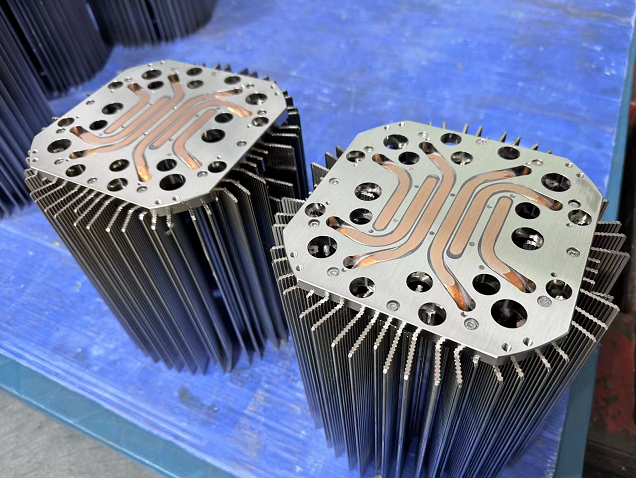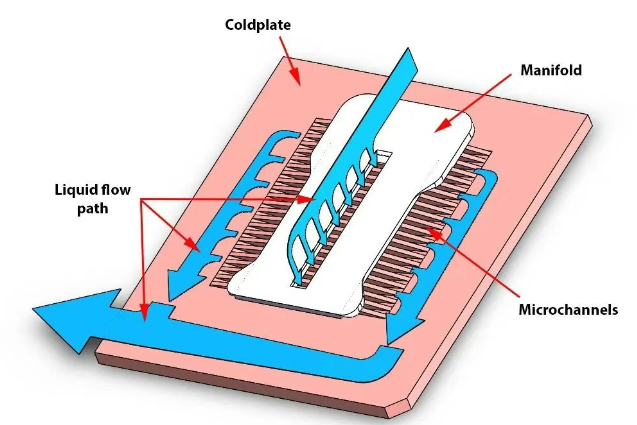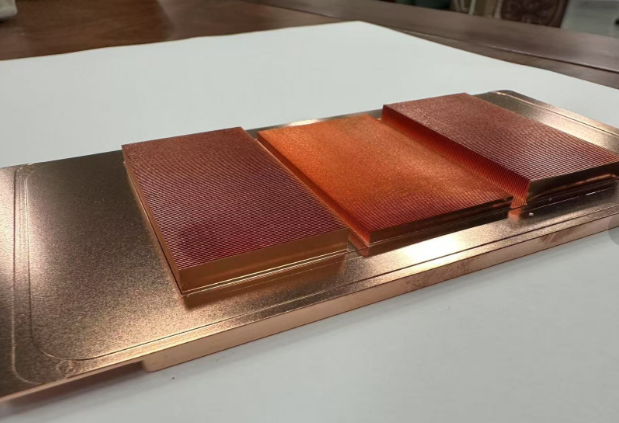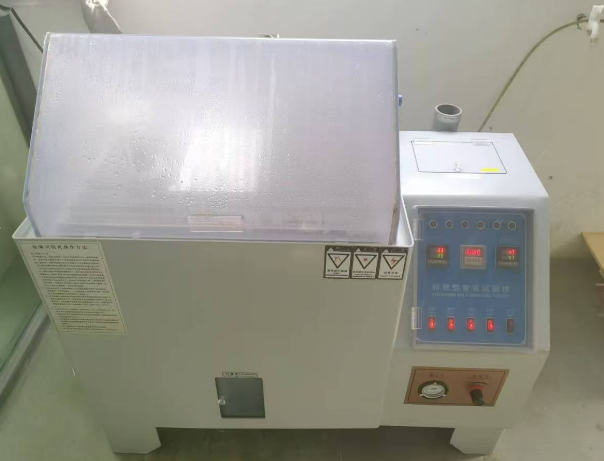Introduction
In the dynamic landscape of high-power electronic devices, efficient thermal management is essential for optimal performance and longevity. Within this domain, KenfaTech has emerged as a beacon of innovation, offering cutting-edge solutions to tackle the challenges of heat generation.
Central to KenfaTech’s thermal management arsenal is the indispensable heat sink. These devices serve as stalwart guardians, swiftly dissipating thermal energy away from electronic components, ensuring they operate within safe temperature thresholds. Across a myriad of applications, heat sinks play a vital role in maintaining device reliability and performance integrity.
This article ventures into heat sink integration within high-power electronic devices, explicitly examining KenfaTech’s contributions to enhancing thermal dissipation. Through meticulous design and strategic deployment, KenfaTech’s heat sinks mitigate thermal challenges and elevate device performance to unprecedented heights.
At its core, this article aims to unravel the intricacies of heat sink integration, spotlighting KenfaTech’s innovative solutions. By delving into the nuances of design optimization and material selection, readers will understand how KenfaTech’s heat sinks amplify thermal efficiency, bolstering the reliability and longevity of electronic devices.
Throughout our exploration, we will address pertinent inquiries within thermal management, guiding readers to informed decision-making. From selecting the ideal heat sink supplier to harnessing the benefits of custom solutions, we navigate the terrain with clarity and expertise. By the journey’s end, readers will emerge equipped with the knowledge to harness KenfaTech’s heat sink technology, ushering in a new era of thermal management excellence in high-power electronic devices.

Understanding Heat Sink Integration
Effective integration of heat sinks into electronic devices is crucial for optimal thermal management, ensuring reliable performance and longevity.
Explanation of Effective Integration
Effective integration of heat sinks involves more than just attaching them to electronic components. It requires careful consideration of various factors to maximize thermal dissipation and minimize thermal resistance. Engineers can mitigate heat buildup and maintain optimal operating temperatures by seamlessly incorporating heat sinks into the device’s design.
Factors Influencing Efficiency
- Contact Surface Area: The contact surface area between the heat sink and the electronic component plays a significant role in heat transfer efficiency. A larger contact area allows for better thermal conduction, facilitating heat dissipation from the component to the heat sink.
- Thermal Interface Material Selection: The choice of thermal interface material (TIM) is critical for optimizing heat transfer between the electronic component and the heat sink. High-quality TIM with excellent thermal conductivity helps minimize thermal resistance at the interface, ensuring efficient heat dissipation.
- Design Considerations: Designing the device’s airflow path and heat transfer paths is essential for effective heat sink integration. Proper airflow management ensures efficient heat dissipation while optimizing heat transfer paths reduces thermal resistance and improves thermal performance.
- Material Properties: The material properties of the heat sink, including its thermal conductivity and specific heat capacity, significantly impact its effectiveness in dissipating heat. Heat sinks from materials with high thermal conductivity, such as copper or aluminum, exhibit superior heat transfer capabilities, enhancing overall thermal management efficiency.
By carefully considering these factors and incorporating them into the design and integration process, engineers can maximize the efficiency of heat sink integration in electronic devices. This ensures optimal thermal performance and enhances device reliability and longevity.
Collaborating with a reputable heat sink supplier throughout the integration process can provide valuable insights and expertise. Whether seeking standard heat sink solutions or custom designs tailored to specific requirements, partnering with a knowledgeable supplier ensures optimal thermal management solutions for electronic devices.
Quantifying Thermal Dissipation Enhancement
Understanding the effectiveness of heat sink integration in enhancing thermal dissipation is paramount for evaluating its impact on electronic device performance.
Overview of Measurement Methods
Several methods are employed to measure and quantify thermal dissipation in electronic devices:
- Thermocouples: Thermocouples are commonly used to measure temperature gradients and changes within electronic components. By strategically placing thermocouples at critical points, engineers can monitor temperature variations and assess the efficacy of heat sink integration.
- Infrared Imaging: Infrared imaging techniques enable non-contact temperature measurement, providing a comprehensive visualization of thermal distribution across electronic devices. This allows engineers to identify hotspots and evaluate the effectiveness of heat sink placement and design.
- Thermal Resistance Measurement: Thermal resistance measurement techniques quantify the resistance to heat flow within electronic devices. By comparing thermal resistances with and without heat sink integration, engineers can assess the impact of heat sink integration on overall thermal performance.
Case Studies and Examples
- Comparative Analysis of Temperature Reduction: Conducting a comparative analysis of temperature reduction with and without heat sink integration offers valuable insights into the effectiveness of heat sinks. By measuring the temperature of electronic components under identical operating conditions, engineers can quantify the thermal dissipation enhancement achieved through heat sink integration.
- Real-world Examples Showcasing Improved Device Longevity and Reliability: Real-world case studies provide tangible evidence of the benefits of heat sink integration. Engineers can demonstrate the practical significance of thermal management solutions by documenting instances where heat sink integration has improved device longevity and reliability.
By quantifying thermal dissipation enhancement through rigorous measurement techniques and presenting real-world examples, engineers can effectively evaluate the impact of heat sink integration on electronic device performance. This empirical evidence aids in decision-making when selecting heat sink solutions and collaborating with suppliers to optimize thermal management strategies.
Challenges and Considerations
Efficient integration of heat sinks into electronic devices comes with its fair share of challenges.
Common Challenges Associated with Heat Sink Integration
- Size Constraints and Space Limitations: One of the primary challenges engineers face is accommodating heat sinks within the limited space available in electronic devices. As electronic components continue shrinking, finding adequate space for heat sink integration becomes increasingly challenging.
- Compatibility Issues with Other Components: Heat sink integration can sometimes pose compatibility issues with other components within the device. Components such as connectors, cables, and nearby circuitry may obstruct the placement of heat sinks or interfere with their effectiveness in dissipating heat.
- Environmental Factors Affecting Performance: Environmental factors such as temperature variations, humidity, and airborne contaminants can significantly impact the performance of heat sinks. Extreme temperatures or exposure to corrosive substances can degrade heat sink materials and compromise thermal conductivity, reducing thermal dissipation efficiency.
Strategies for Overcoming Challenges
To address the challenges associated with heat sink integration, engineers employ various strategies:
- Advanced Thermal Design: Advanced thermal design techniques allow engineers to optimize heat sink placement and maximize thermal dissipation within device size and space limitations.
- Component Integration Planning: Thorough planning and coordination during the device design phase help mitigate compatibility issues with other components. Engineers can proactively identify and address potential conflicts by considering heat sink integration early in the design process.
- Material Selection and Coating: Choosing heat sink materials with superior thermal conductivity and corrosion resistance enhances performance and longevity, even in harsh environmental conditions. Protective coatings can safeguard heat sinks against environmental factors, ensuring sustained thermal performance.
- Custom Heat Sink Solutions: In cases where standard heat sink solutions are not suitable, customized heat sink designs tailored to specific application requirements offer an effective solution. Collaborating with experienced heat sink suppliers to develop custom solutions ensures optimal thermal management performance while addressing unique challenges.
By implementing these strategies, engineers can overcome common challenges associated with heat sink integration and optimize thermal management in electronic devices. Collaboration with knowledgeable heat sink suppliers facilitates the development of tailored solutions that meet the demands of diverse applications.
Future Trends and Innovations
As technology continues to evolve, so does the landscape of heat sink technology.
Emerging Trends and Innovations
- Advanced Materials: Researchers are exploring novel materials with superior thermal conductivity and mechanical properties to enhance heat sink performance. Materials such as carbon nanotubes, graphene, and diamond composites hold promise for improving thermal dissipation while reducing weight and size.
- Micro- and Nano-structured Heat Sinks: Developing micro- and nano-structured heat sinks allows for enhanced heat transfer at the microscopic level. These structured surfaces increase surface area and promote more efficient heat dissipation, particularly in compact electronic devices with limited space.
- Embedded Cooling Solutions: These solutions integrate heat sinks directly into electronic components or circuit boards, eliminating the need for separate heat sink assemblies. This integration minimizes thermal resistance and enhances thermal management efficiency, especially in densely packed electronic devices.
- Active Cooling Technologies: Advancements in active cooling technologies, such as thermoelectric coolers and microfluidic cooling systems, offer dynamic thermal management solutions. These technologies actively regulate temperature fluctuations, providing precise control over thermal conditions and improving overall device performance.
Advancements and Their Impact
These advancements are expected to revolutionize heat sink technology and further enhance the efficiency of heat sink integration in high-power electronic devices. By leveraging advanced materials and innovative design approaches, engineers can develop heat sinks that offer superior thermal dissipation capabilities while addressing space constraints and compatibility issues.
Furthermore, embedded cooling solutions and active cooling technologies promise to usher in a new era of thermal management, where heat sinks seamlessly integrate into electronic devices and actively regulate temperature fluctuations. This holistic approach to thermal management ensures optimal performance and reliability, even in the most demanding operating conditions.
As these trends and innovations evolve, collaboration with knowledgeable heat sink suppliers becomes essential. Custom heat sink solutions tailored to specific application requirements enable engineers to leverage the latest advancements in heat sink technology, ensuring optimal thermal management solutions for high-power electronic devices.
Conclusion
In conclusion, integrating heat sinks is an indispensable facet of thermal management in high-power electronic devices, ensuring optimal performance and longevity.
Effective integration of heat sinks is paramount in maintaining device reliability and functionality, particularly in escalating thermal challenges. By proficiently dissipating heat away from electronic components, heat sinks safeguard device integrity and uphold operational efficiency, embodying a cornerstone of modern electronic design.
Informed heat sink selection and integration are not merely endeavors of technicality but pivotal determinants of device performance and longevity. Through collaboration with knowledgeable heat sink suppliers and the utilization of custom heat sink solutions tailored to specific requirements, engineers can harness the expertise of brands like KenfaTech to maximize thermal dissipation efficiency and ensure unparalleled device reliability.
In essence, heat sink integration epitomizes the synergy of innovation and necessity, propelling high-power electronic devices into unparalleled performance and reliability realms. With brands like KenfaTech at the forefront of thermal management innovation, the future holds promise for even more significant strides in optimizing heat sink integration to meet the evolving demands of electronic design.



